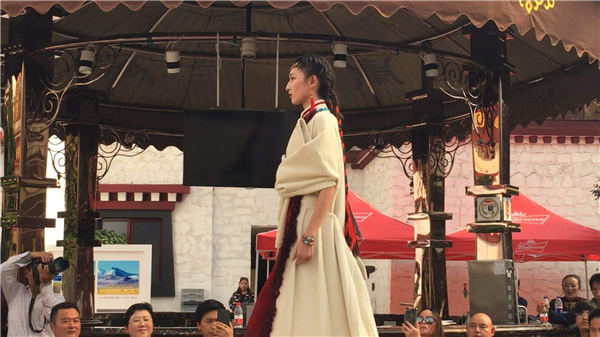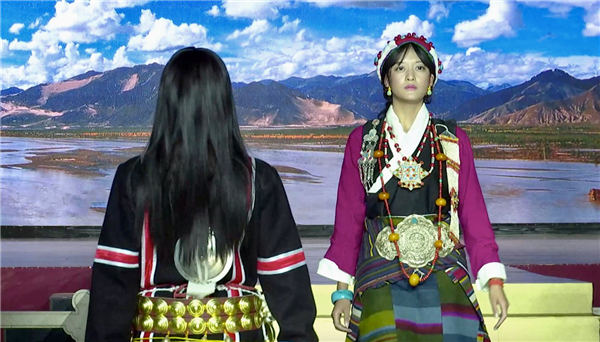 |
|
Models wear costumes that combine Tibetan style and modern fashion elements. [Photo/CGTN] |
This is the first time that a fashion show was included in Tibet's annual Shoton Festival, known as Yogurt Festival. But as early as 2002, a model contest was held in front of the world-renowned Potala Palace. Zhang Jian, an experienced fashion show director, witnessed both events.
"Back then, very few people in Tibet paid attention to costume culture. It was like people 'forced' their fashion concepts into the mysterious place. But this time, the designers fully explored valuable elements from Tibetan costumes. It's significant," said Zhang.
China has a total of 56 ethnic minorities, with each having its own distinctive costumes signifying an important aspect of culture and identity. But in most ethnic groups today, people wear their costumes onlyon important occasions like weddings or festivals.
 |
|
A model showcases a set of costume that combines Tibetan and modern elements. [Photo/CGTN] |
"I think this is not a good phenomenon. As a designer of Tibetan costumes, I really hope that people around me, especially the younger generation, can make a habit of wearing our own costumes," said 24-year-old Tashi, who runs a Tibetan costume store in the southwestern Chinese city of Chengdu.
She said that the number of such stores is actually growing, so is the number of people that show interest in Tibetan costumes, including some non-Tibetans. The young fashion designer said she even tried to promote their costume culture on popular social networking platforms.
 |
|
Two Tibetans display their own costumes at the fashion show. [Photo/CGTN] |
Zhang says it's worth attempting to apply traditional craftsmanship of ethnic costumes, such as embroidery and color matching, to modern designs, which he said could be a great way of preserving tradition while passing it down.
"We can't just copy what our ancestors left to us. Moreover, we need to innovate and develop them with our wisdom," he said.